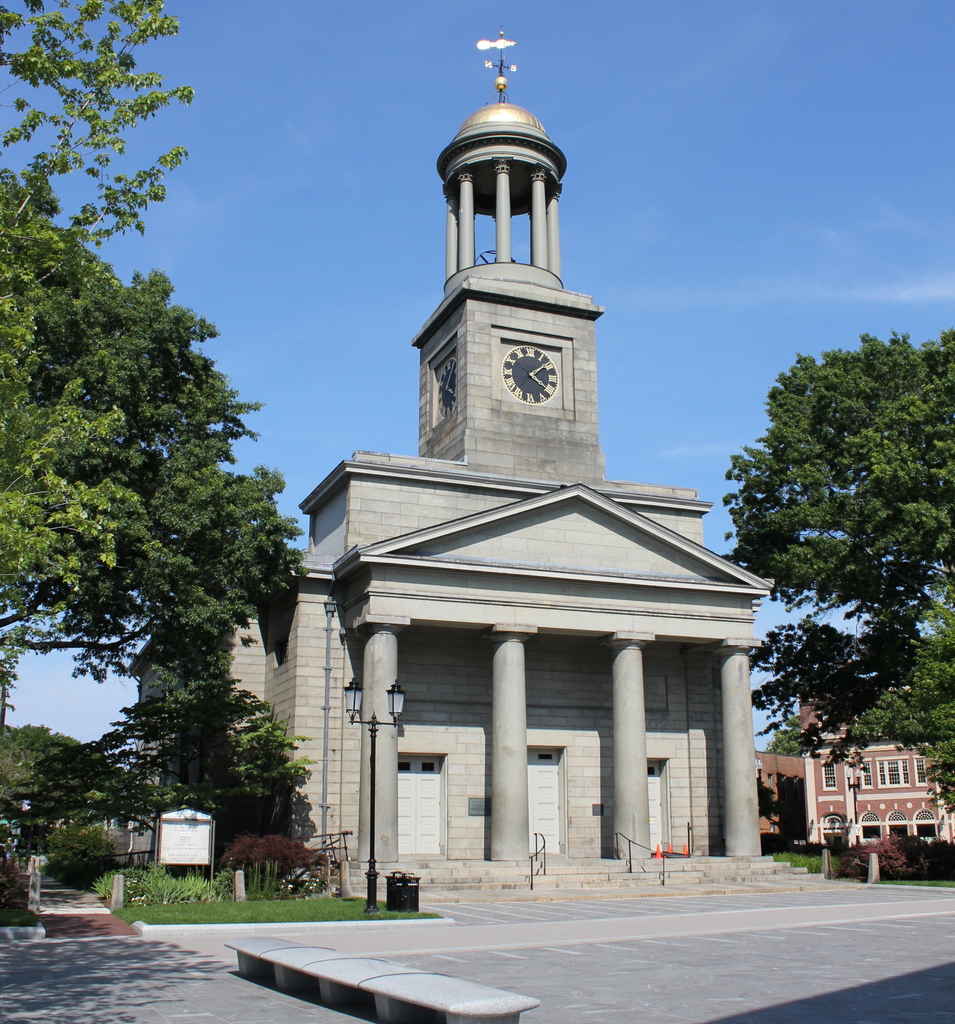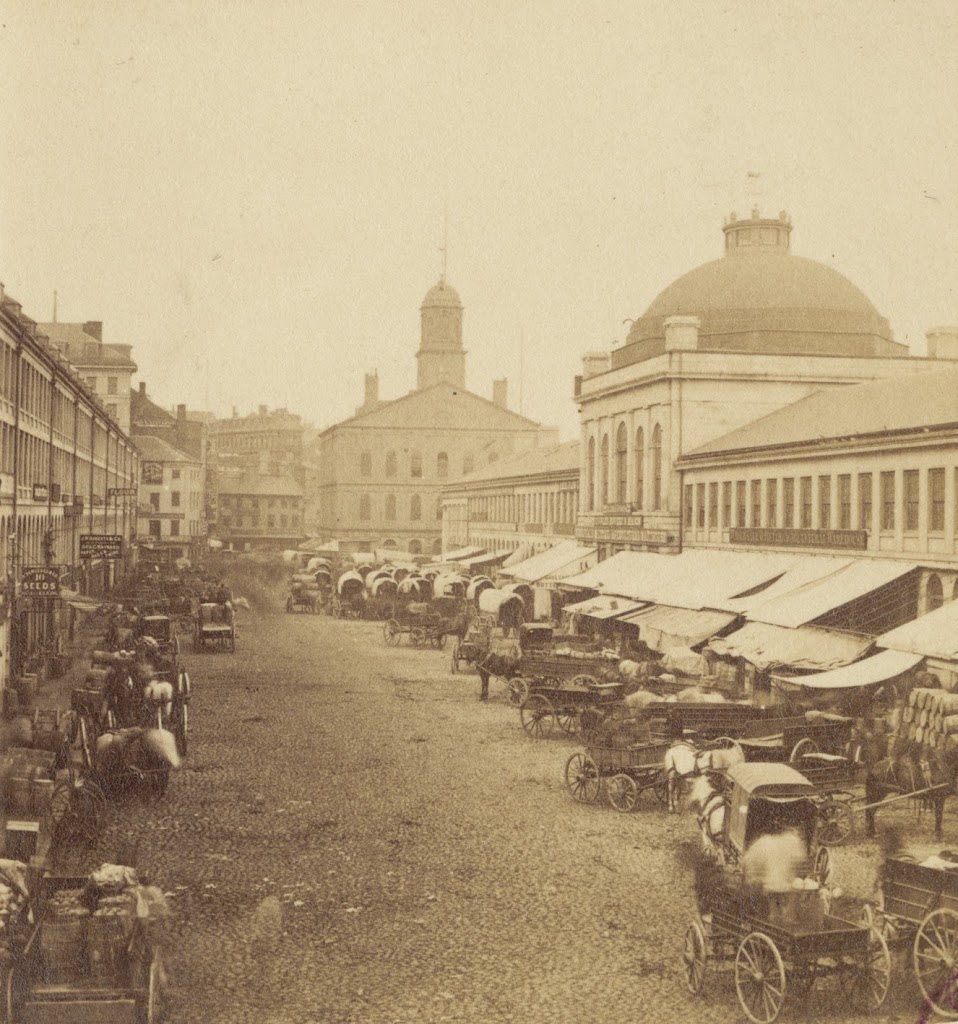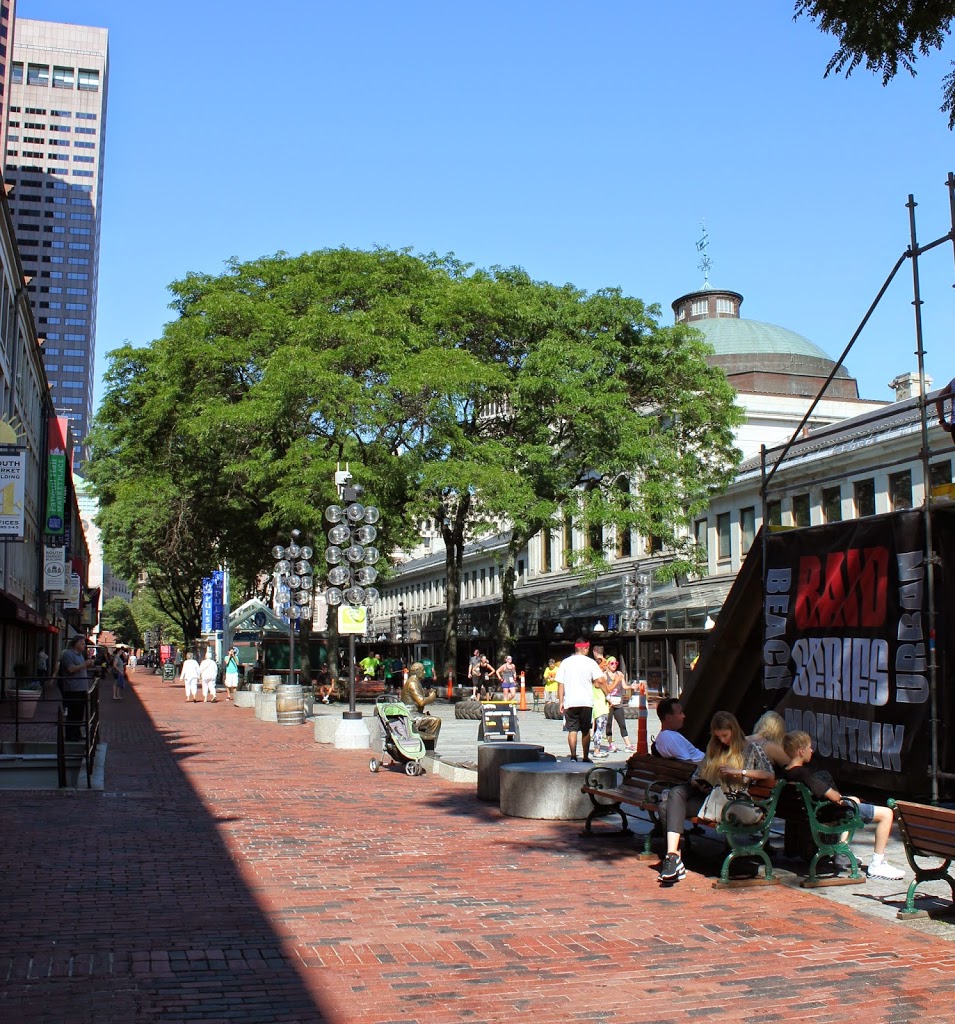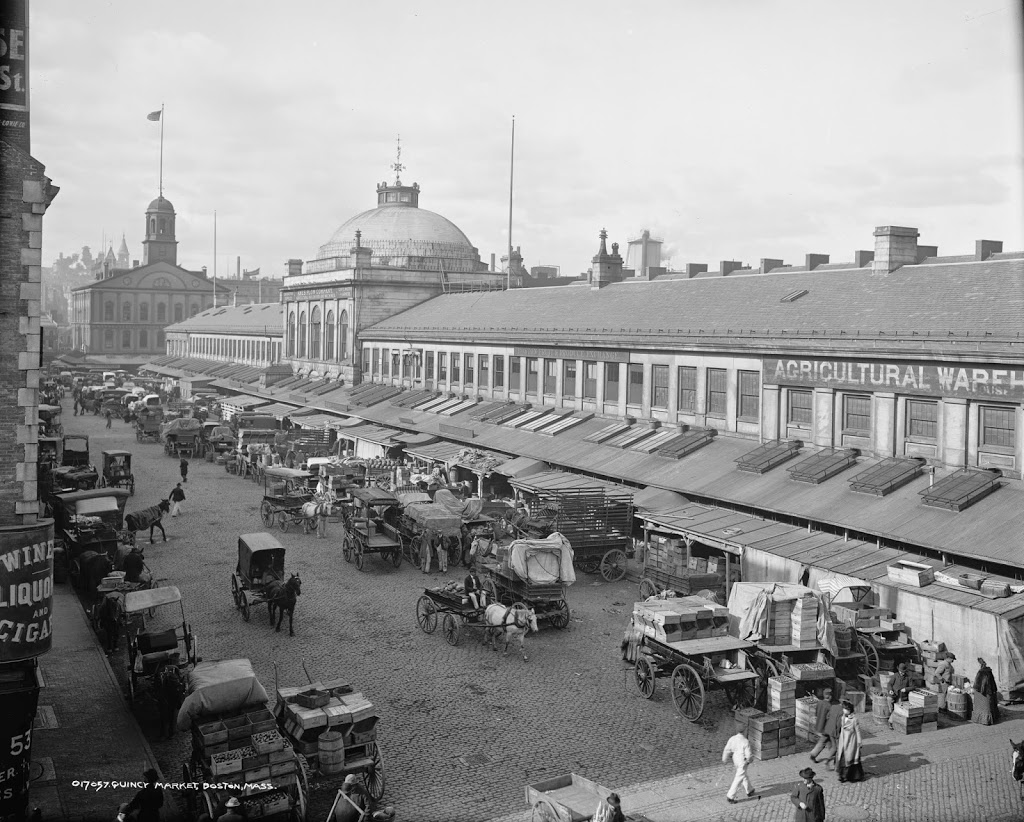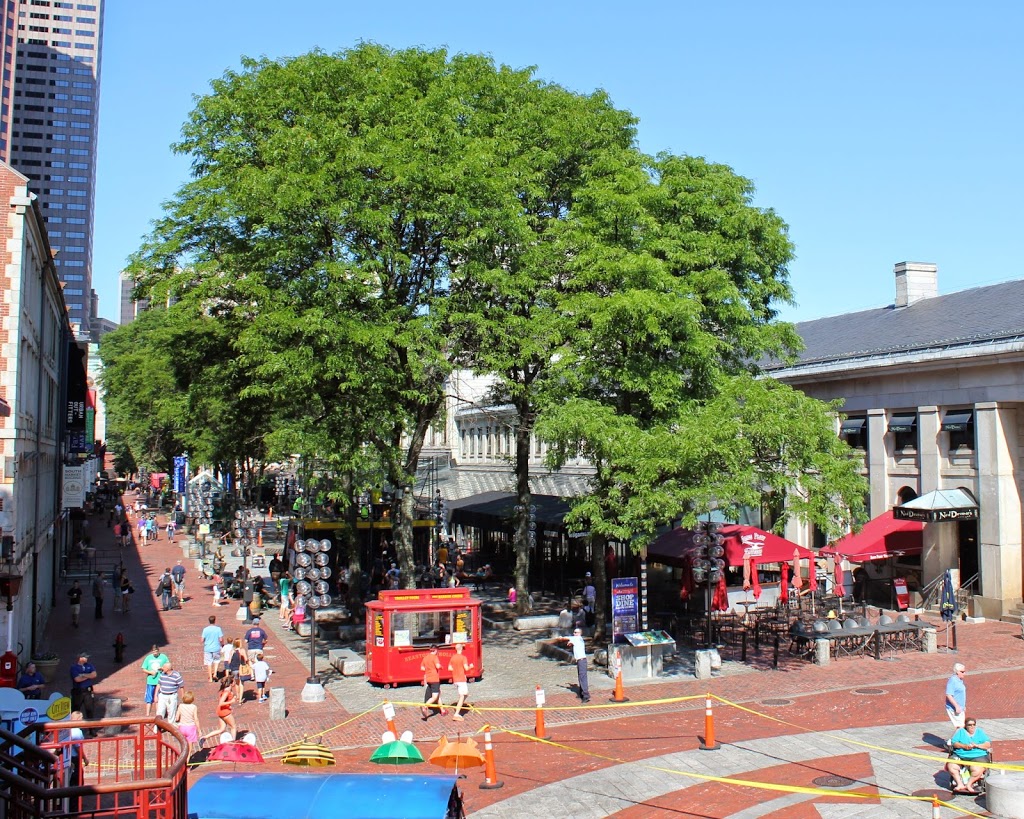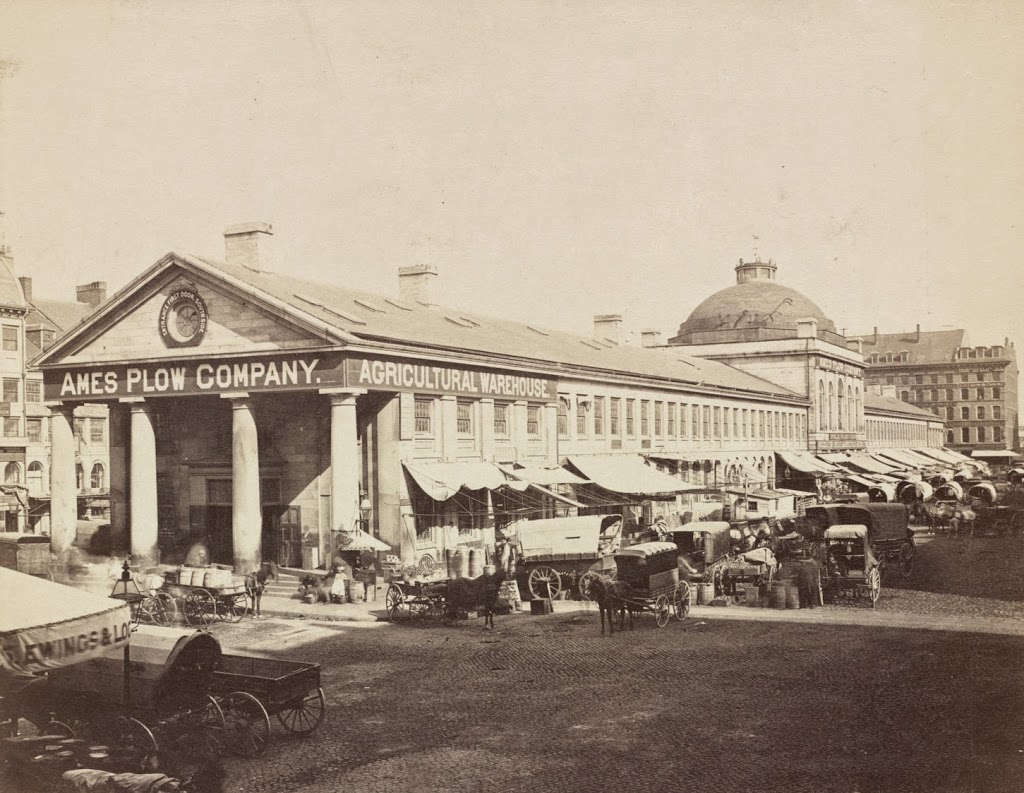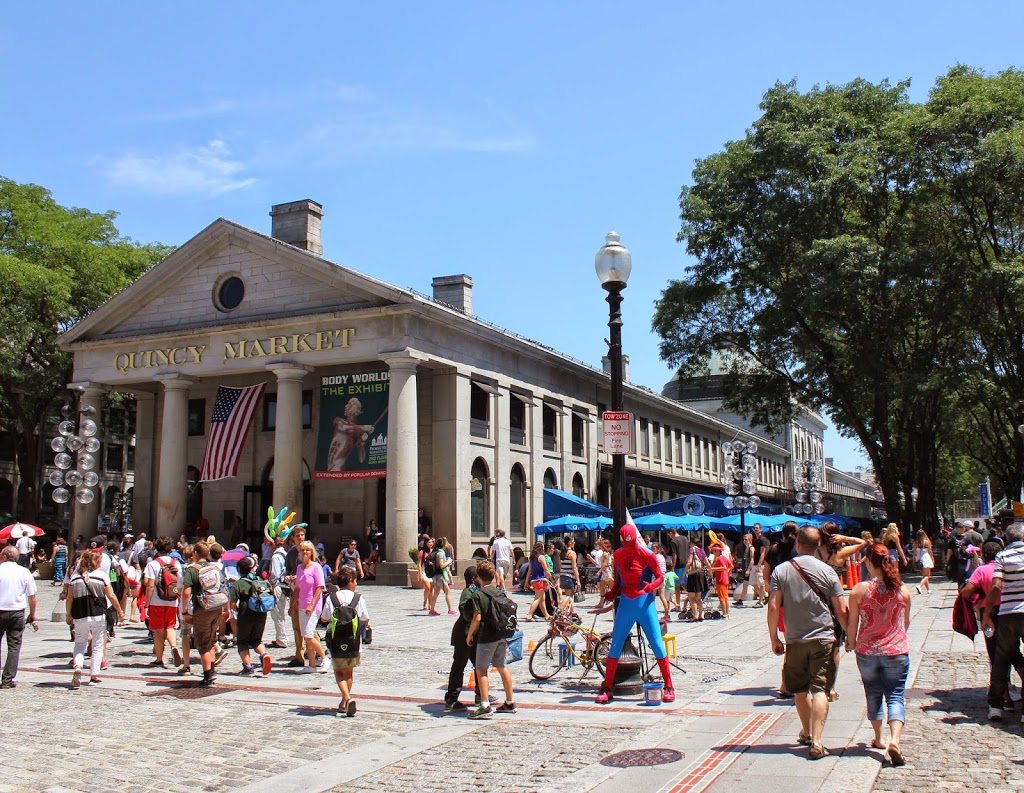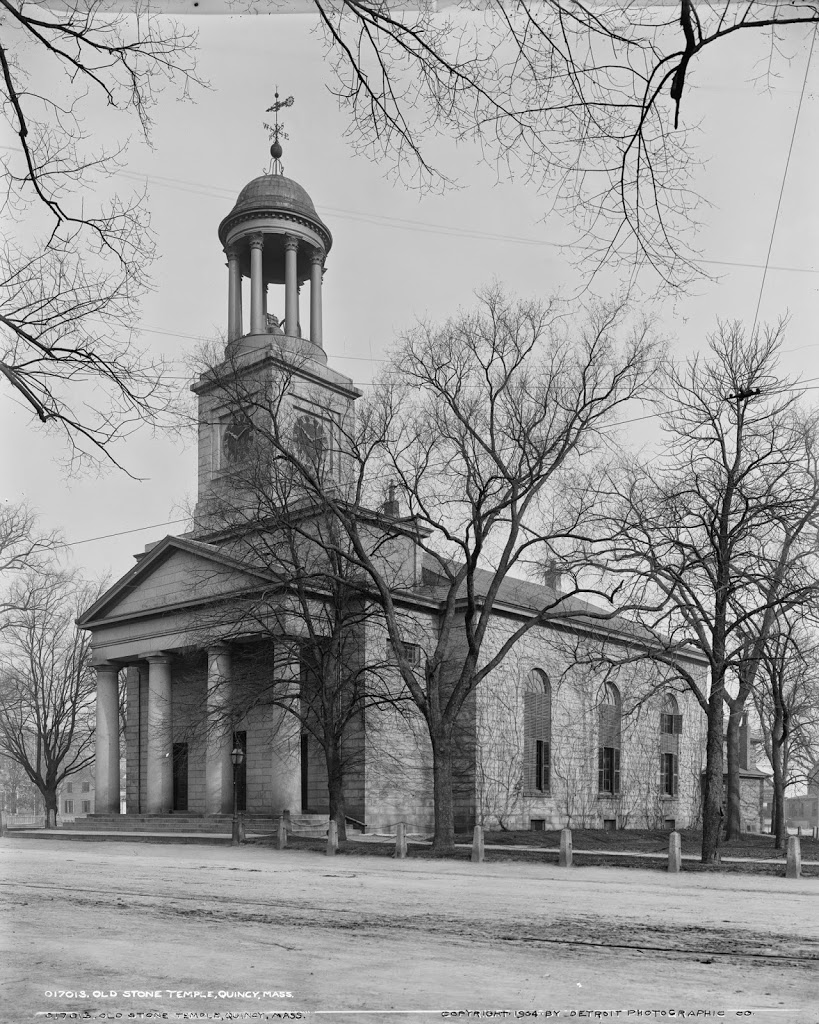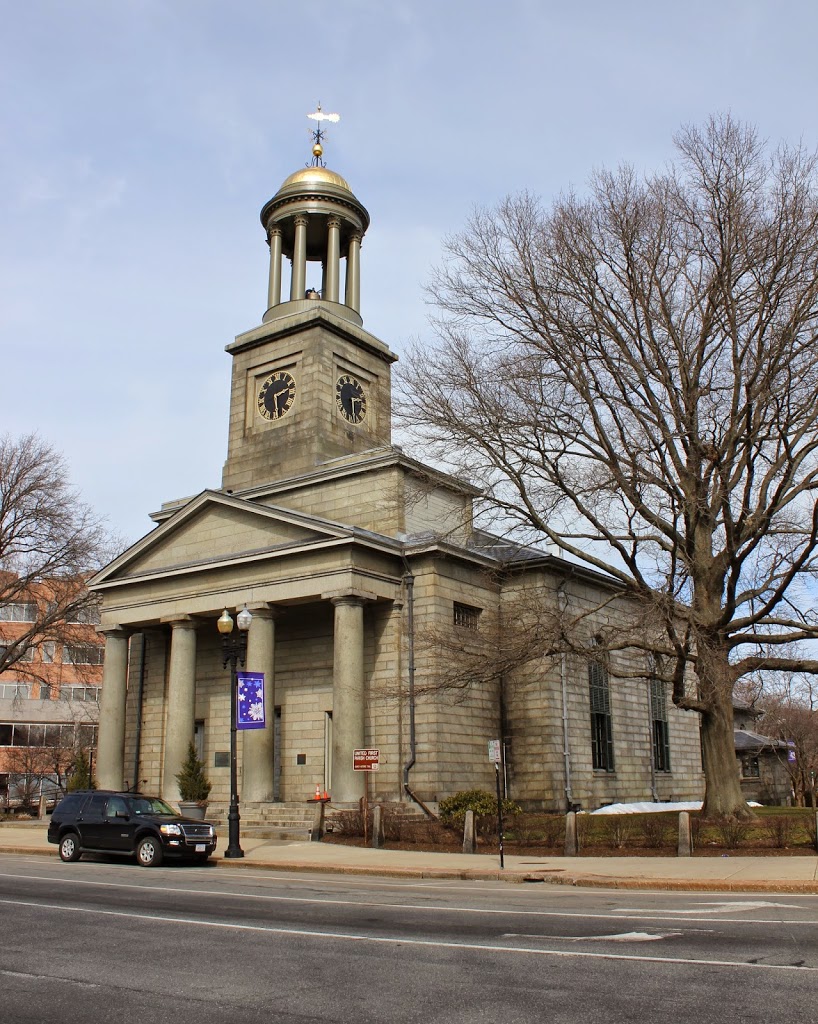The United First Parish Church on Hancock Street in Quincy, around 1865-1885. Image courtesy of the New York Public Library.
The church in 2019:
Quincy’s United First Parish Church was previously featured in one of the first blog posts on this site, which shows the building from the southwest corner. These two photos here show a similar view of the church, but from the northeast side, from directly in front of Quincy City Hall.
The church was completed in 1828, and it is constructed of locally-quarried Quincy granite, most of which was taken from quarries owned by the Adams family. It features a Greek Revival-style design that was common for New England churches of the era, including columns and a portico at the main entrance, and a multi-stage steeple above it. The design was the work of prominent Boston architect Alexander Parris, who is perhaps best remembered for Quincy Market, which had been completed two years before the church and shares some similar design elements.
At the time of its completion, the most notable parishioner of this church was President John Quincy Adams, whose family had help to finance its construction. His father, President John Adams, had also been a member of the same congregation, although he died in 1826, a year before construction began on this building. Both John and Abigail Adams were subsequently interred here in 1828, in a crypt beneath the church. Then, in 1852, John Quincy Adams and his wife Louisa were also interred in the crypt, giving the church the unusual distinction of being the final resting place of two United States presidents.
The church was formally dedicated on November 12, 1828, less than two weeks after John Quincy Adams lost his re-election bid to Andrew Jackson. Contemporary newspaper accounts observed that the crowd at the dedication ceremony was smaller than expected due to the “uncommon tempestuousness” of the weather, but the Boston Courier nonetheless noted that:
The house was well filled, and the exercises were such as might be expected from the gentlemen who took part in them. The choir were well versed in their pieces, and performed with gratifying precision.
A number of local clergymen participated in the ceremony, and Quincy’s own pastor, the Reverend Peter Whitney, gave the sermon on Genesis 28:17, “This is none other but the house of God, and this is the gate of heaven.” Among the hymns was one written by noted Boston poet and clergyman John Pierpont, who is probably best remembered today as the grandfather and namesake of Gilded Age financier John Pierpont Morgan. Reverend Pierpont’s hymn included many references to the late John Adams, particularly the final two stanzas, which read:
Here the water of salvation
Long hath gushed a liberal wave;
Here, a Father of our nation
Drank, and felt the strength, it gave.
Here he sleeps, his bed how lowly!
But his aim and trust were high;
And his memory, that is holy;
And his name, it cannot die.
While beneath this Temple’s portal
Rest the relics of the just,
While the light of hope immortal
Shines above his sacred dust,
While the well of life its waters
To the weary here shall give,
Father, may thy Sons and Daughters
Kneeling round it drink and live!
The first photo shows the church as it appeared sometime during the second half of the 19th century, probably around the late 1860s or 1870s. Since then, there have been some changes to this scene. The building in the distant right of the first photo was demolished at some point in the late 19th or early 20th centuries, and in 1924 the old Quincy Patriot Ledger building was constructed on the site. More recently, in the 2010s this section of Hancock Street in front of the church was closed to traffic, and it was reconstructed as a pedestrian-only plaza, as shown in the present-day scene.
Overall, though, remarkably little has changed with the church in the intervening 140 to 150 years, aside from an 1889 addition to the rear of the building, which is not visible in this view. It is still an active Unitarian Universalist congregation, and the building remains well-preserved on both the interior and exterior. It was designated as a National Historic Landmark in 1970, and since 1976 the church has been opened to the public for guided tours, including visits to the Adams family crypt.


